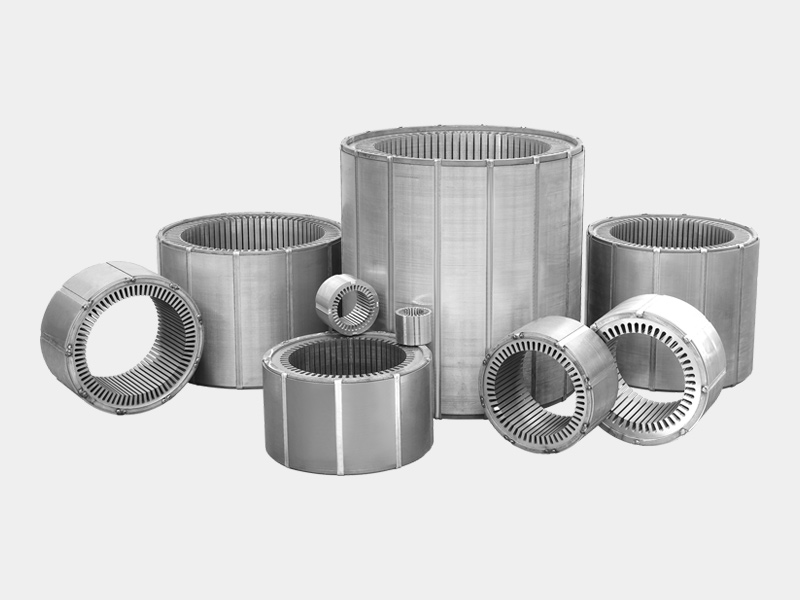Introduction
Electric motors are essential components in various industrial, commercial, and household applications. The stator, a stationary part of the motor, plays a crucial role in generating the electromagnetic field necessary for motor operation. Over time, stators can suffer from wear, insulation breakdown, or mechanical damage, leading to motor failure.
This guide provides beginners with fundamental knowledge on motor stator repair and maintenance, helping extend motor lifespan and ensure efficient performance.
1. Understanding the Motor Stator
The stator is the outer shell of an electric motor, consisting of a laminated iron core and copper windings. When electricity flows through these windings, a rotating magnetic field is created, which interacts with the rotor to produce motion.
Common Stator Problems
- Insulation Failure: Due to overheating, moisture, or chemical exposure.
- Winding Damage: Caused by electrical surges, short circuits, or physical stress.
- Mechanical Wear: Misalignment or bearing failure can damage stator laminations.
- Contamination: Dust, oil, or debris can reduce cooling efficiency and cause overheating.
2. Essential Tools for Stator Repair and Maintenance
Before starting any repair work, gather the necessary tools:
- Multimeter – Measures resistance and checks for open or short circuits.
- Megohmmeter (Insulation Tester) – Tests winding insulation integrity.
- Winding Machine – Used for rewinding damaged coils.
- Soldering Iron – Repairs broken connections.
- Cleaning Supplies – Solvents, brushes, and compressed air for removing contaminants.
3. Step-by-Step Stator Inspection
Step 1: Visual Inspection
- Look for burnt windings, discoloration, or melted insulation.
- Check for loose connections or broken wires.
- Inspect stator laminations for signs of rubbing or deformation.
Step 2: Electrical Testing
- Continuity Test: Use a multimeter to check for open circuits in the windings.
- Insulation Resistance Test: A megohmmeter should show readings above 1 megohm (lower values indicate insulation breakdown).
- Phase-to-Phase Resistance Test: Ensure all phases have balanced resistance.
Step 3: Thermal Inspection
- Overheating can be detected using an infrared thermometer or thermal camera.
- Hotspots indicate poor connections or insulation failure.

4. Common Stator Repair Techniques
A. Cleaning and Decontamination
- Use compressed air to remove dust and debris.
- For oil or grease contamination, apply electrical-grade solvents.
- Ensure the stator is completely dry before reassembly.
B. Insulation Repair
- Minor insulation damage can be fixed with insulation varnish or tape.
- For severe damage, rewinding the stator may be necessary.
C. Rewinding Stator Coils
1. Remove Damaged Windings: Carefully unwind or cut out old coils.
2. Count Turns and Measure Wire Gauge: Ensure the new winding matches the original specifications.
3. Wind New Coils: Use a winding machine for precision.
4. Secure and Insulate: Apply insulating materials and varnish to protect the windings.
D. Fixing Broken Connections
- Solder or crimp broken wire ends.
- Use heat-shrink tubing to insulate repaired sections.
5. Preventive Maintenance for Stator Longevity
A. Regular Inspections
- Schedule monthly or quarterly checks for early fault detection.
- Monitor vibration and noise levels, which can indicate stator issues.
B. Proper Lubrication
- Ensure bearings are well-lubricated to prevent misalignment and stator damage.
C. Environmental Control
- Keep motors in dry, clean environments to avoid moisture and dust buildup.
- Use enclosures or filters in harsh conditions.
D. Temperature Monitoring
- Install thermal sensors to detect overheating before major damage occurs.
6. Safety Precautions
- Always disconnect power before inspection or repair.
- Wear insulated gloves and safety goggles when handling electrical components.
- Follow local electrical safety regulations to prevent accidents.
Conclusion
Proper motor stator repair and maintenance can significantly improve motor efficiency and lifespan. By following this beginner’s guide, you can identify common stator problems, perform basic repairs, and implement preventive measures to avoid costly failures.
Regular inspections, proper cleaning, and timely repairs will ensure your motor operates smoothly for years to come. Whether you're a hobbyist or a technician, mastering these fundamentals will help you maintain electric motors effectively.
Would you like additional details on any specific repair technique? Let me know how I can assist further!

Copyright © Zhejiang Xinzheng Electromechanical Technology Co., Ltd. All Rights Reserved.
This website uses cookies to ensure you get the best experience on our website.
Comment
(0)